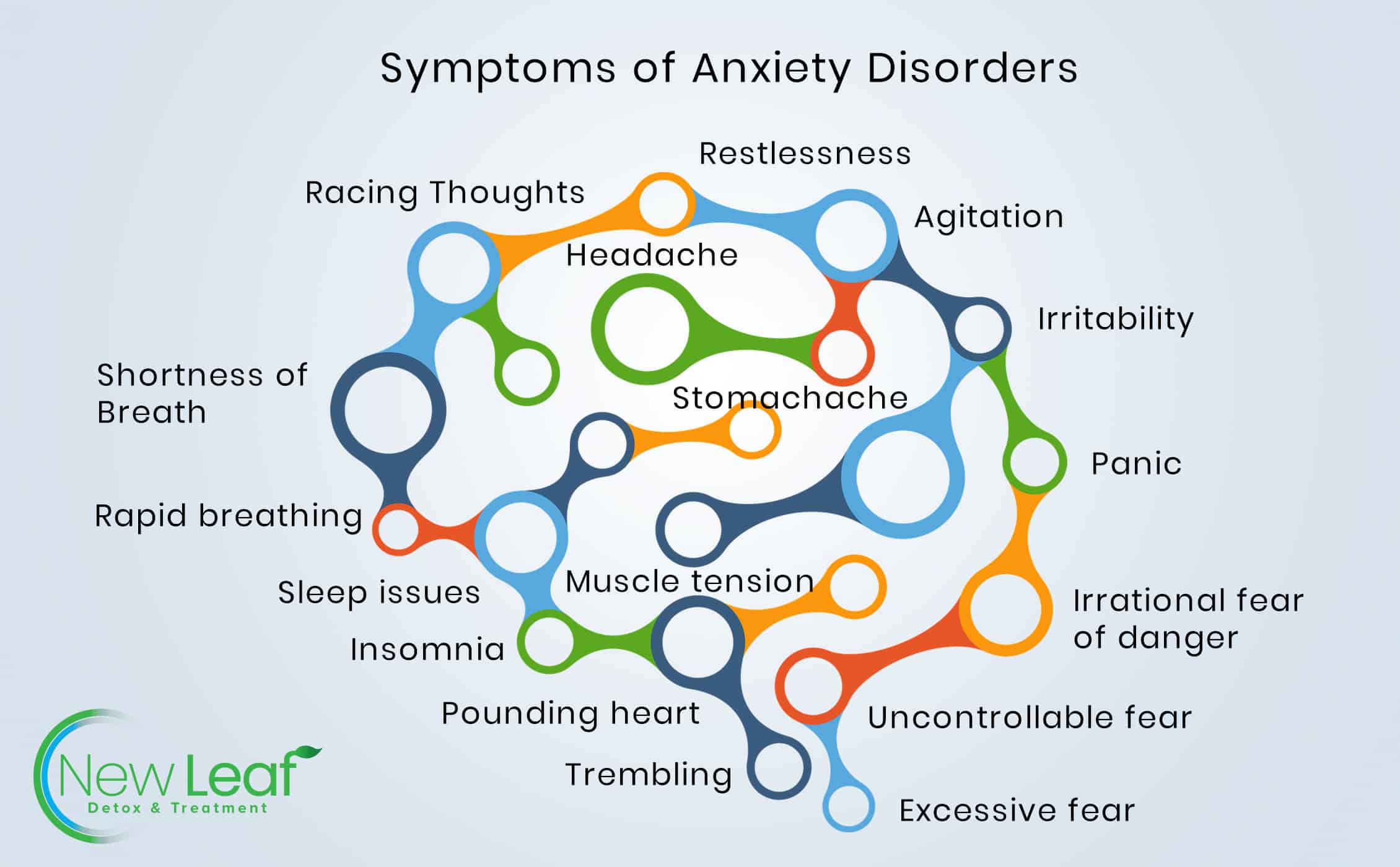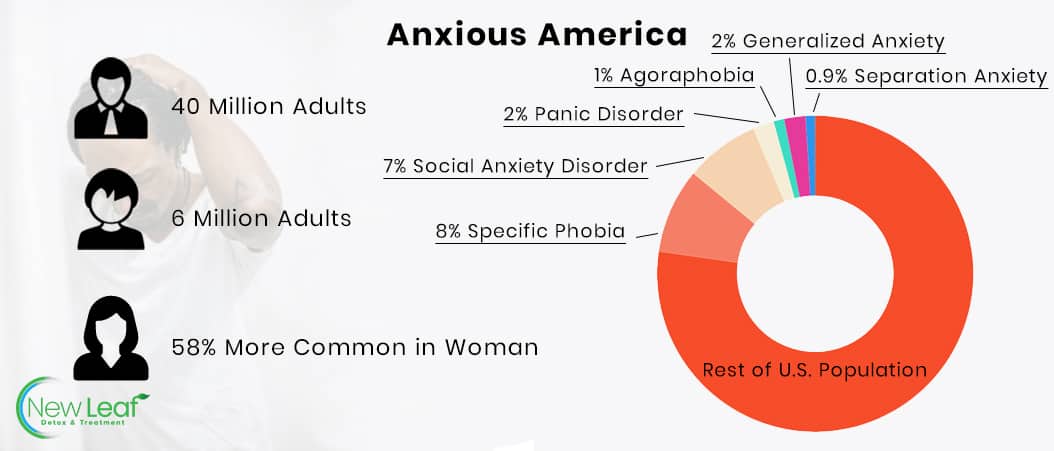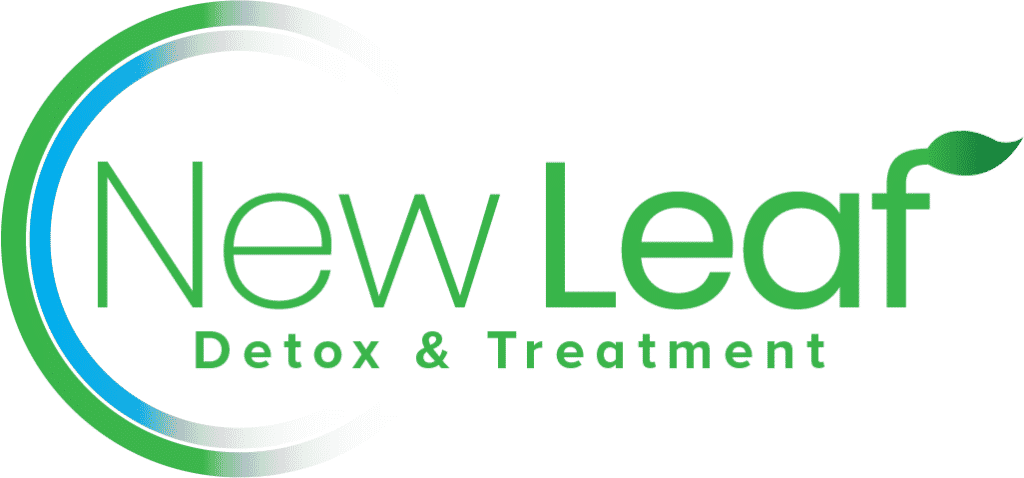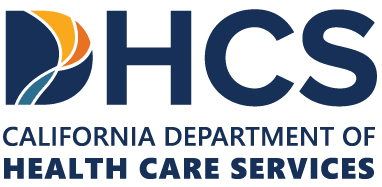Anxiety and Addiction
A Closed Loop of Co-Morbidity & Dual Diagnosis
Table Of Contents
The occurrence of addiction and anxiety together is a complex condition, a closed-loop, a Möbius Strip of anxiety and addiction that needs to be treated globally and specifically, both in macro and micro terms. The risk for substance abuse is twice more likely in those who also suffer from anxiety disorders. A significant number of those afflicted with anxiety disorders manage their symptoms by self-medicating with alcohol and substances.
But self-medication is a slippery slope. Relying on alcohol and drugs to relieve anxiety supercharges many of the symptoms of anxiety. The symptoms become deeply rooted and require increased consumption of alcohol and substances for relief. The afflicted individual quickly develops a tolerance for the substance of choice and increases consumption in order to subdue the anxiety. Very quickly, the person is dependent on the drug and is ensnared in a full-blown addiction.
Disclaimer: Only for fair use for educational purposes and illustration. We do not own the copyright to this video.
Credit: Inside Out Mental Health Series
What is Anxiety?
Most of us may be unable to articulate the definition of anxiety. In the absence of language that precisely expresses the complex contours of anxiety, we may resort to describing anxiety in colloquial terms. We may allude to “freaking out,” “meltdown mode,” “losing it,” or “stressed.”
Though we may be unsure about the definition of anxiety, nearly everyone knows what anxiety feels like. When we’re nervous about stepping up in front of a large group to speak, or going into an interview for a job, or taking an exam, or meeting a date for the first time, we feel sensations that we commonly call, “butterflies in the stomach.” Anxiety in new and stressful situations causes slowed-down breathing as well as rapid heartbeats. We may have tummy aches, feel sweaty, and become nervous. These feelings make us feel uneasy, uncomfortable, and tense. They invariably occur in situations that are unfamiliar or where the outcomes are unknown.
Normal Anxiety
Anxiety is the body’s reflexive, evolutionary response to unfamiliar, stressful, and dangerous situations. It is a lesser condition than legitimate fear which compels the fight and flight response. For example, if you’re walking alone and see a threatening person moving towards you, the sympathetic nervous system activates and releases a rush of stress hormones. A surge of Norepinephrine released in the body calms the nerves and makes a person alert, focused, and nimble. It elevates focus and heightens your senses and ability to concentrate and strategize to address the stressful experience or to evade potential danger. Most people experience short episodes of anxiety on and off throughout their life. Normal anxiety is healthy and protective. It empowers us with the ability to focus and deal with stressful situations.
Illustration using Stock Photography
Anxiety Disorders
Conversely, abnormal levels of anxiety are anxiety disorders that render people incapable of having a healthy functional life. Abnormal anxiety incapacitates a person, preventing him/her from thriving and flourishing within a fully functioning life. It impairs the ability to sleep, eat, socialize, and perform and engage in daily activities. People suffering from anxiety disorders are overwhelmed, debilitated, or crippled by uncontrollable, exaggerated emotions when faced with stressful situations. Those afflicted with anxiety disorders have irrational fears and constant worries that they cannot control. They have a catastrophic alarmist mindset when faced with even the most routine and mundane matters.

Causes of Anxiety Disorders
Anxiety disorders are complex afflictions that are a combination of nature, nurture, and experience. They arise from a cluster of risk factors including genetics and heredity, brain chemistry, specificity of personality, and adverse life experiences including early and adult life events. Each affliction is often unique to the individual, a permutation of all or some of the variables. Anxiety disorders occur across the spectrum from mild to severe in people of all ages. If left untreated, this mental illness can result in adverse psychological, physiological, and physical conditions.
Anxiety Disorders by the Numbers
More than 40 million American adults, nearly 19% of the adult population, suffer from some type of anxiety disorder. Six million children, or 8% of Americans under 18, suffer from anxiety disorders. Taken together, anxiety disorders are the most prevalent mental illness in the US.

Types of Anxiety Disorders
Anxiety Disorders manifest in many iterations. While many have a familiar range of symptoms, they are also singular in their profile.
Generalized anxiety disorder (GAD)
Social anxiety disorder/social phobia
People afflicted with this disorder are acutely sensitive and fearful of being subjected to embarrassment, criticism, and humiliation in social settings. In order to avoid the likelihood of negative emotions, the afflicted individual may distance themselves from social settings and choose self-isolation.
Panic disorder
Those afflicted with this disorder are prone to recurring, unexpected, frequently unprovoked panic attacks that have physical symptoms similar to those experienced in dangerous situations. These include a gamut of physical effects similar to those that manifest when someone is frightened, including shaking, sweating, slowed breathing, chest pain, and dizziness.
Phobias
Anxiety disorders triggered by elements such as specific places, things, and situations fall under the rubric of specific phobias. These specific elements trigger excessive, overwhelming fears that are inexplicable and oftentimes irrational.
Specific phobias include but are not limited to:
- Fear of flying (aerophobia);
- Fear of confinement (claustrophobia);
- and fear of going outside, outdoors, or crowds (agoraphobia).
Separation Anxiety Disorder
Separation from parents and loved ones are stressful for young children. Prolonged separation results in a host of symptoms including panic, fear, and worry about abandonment. Young children are acutely vulnerable to this disorder, but growing older and entering school and social groups usually eliminate the condition in healthy children. There are adults who experience an iteration of this disorder. When separated from their loved ones, they may worry about their loved one’s safety, often imagining horrible things happening to their loved ones. Parents especially are susceptible to this disorder, indiscriminate in their worry regardless of a child’s age.
Related Co-Occurring Illnesses
Those suffering from anxiety disorders are frequently vulnerable to other disorders. Obsessive-Compulsive Disorder (OCD) and Posttraumatic Stress Disorder (PTSD) are often found to occur in those diagnosed with anxiety disorder. Depression is also a pervasive illness in those suffering from anxiety disorders. In one sampling, nearly 50% of those diagnosed with an anxiety disorder were additionally found to be suffering from depression. Eating disorders and attention deficit hyperactivity disorders are also common in those suffering from anxiety.
The combination of these related maladies can exacerbate symptoms, multiply the effects of both disorders to render afflicted individuals in dire straits, and prolong and worsen the health of individuals. Treatment is vital to the affected person so that they can reclaim their health and quality of life.
Anxiety and Addiction Dual Diagnosis
Those suffering from Anxiety Disorders are highly vulnerable to alcohol and substance abuse addiction. Those afflicted with anxiety disorders often seek relief from alcohol and drugs to overcome the symptoms of their anxiety. For example, a young person who suffers from social anxiety disorder may use alcohol as a lubricant to mingle with his/her peers in an attempt to inoculate him/herself against stress and the likelihood of embarrassment and other symptoms.
Additionally, both consumption and withdrawal from alcohol and substances can create symptoms similar to anxiety, such as panic, fear, agitation, trembling, insomnia, restlessness. The link between anxiety and addiction is clear. Besides chemical imbalances in the brain that affect both disorders, there’s a genetic component to the anxiety-addiction dual diagnosis. It’s been found that a family history of both disorders predisposes people to either or both disorders.
Dual Diagnosis Treatment
Treating a patient suffering from dual diagnosis addiction and anxiety is a complex process that requires an array of clinical and therapeutic treatment modalities. Both disorders are so deeply intertwined that the disorders need to be addressed and treated in a customized, individualized, dual diagnosis treatment plan.
Dual Diagnosis Treatment at New Leaf
At New Leaf Detox and Treatment, our clinicians work through an evidence-based process to: gather information and medical history of the patient; engage with the patient to get a full dimension of their addiction, anxiety disorder, physical and mental medical profile, evaluate and assess the patient’s condition; design an individualized treatment plan that centers on evidence-based methodologies.
At New Leaf Detox and Treatment, our individualized treatment plans for addiction and anxiety disorder dual diagnosis are designed from an array of evidence-based treatment modalities centered in Trauma-Informed Care. They include: Detox with or without Medication Assisted Treatment; Psychotherapy; Cognitive Behavioral Therapy; Psychological Testing, Group Therapy, Individual Therapy, Physical Therapy, Addiction Therapy; and a number of innovative treatment modalities.
For more information about Anxiety and Addiction Dual Diagnosis Treatment at New Leaf Detox and Treatment, please visit https://nldetox.com/about-us/ or call us at (866) 932-0905 or email us at info@nldetox.com.
Resources
- Anxiety & Depression Association of America. (n.d.). Substance Use Disorders: Anxiety and Depression Association of America, ADAA. Retrieved June 30, 2021, from https://adaa.org/understanding-anxiety/co-occurring-disorders/substance-abuse
- Bhargava, H. D., MD. (2020, June 25). Anxiety Disorders: Types, Causes, Symptoms, Diagnosis, Treatment. Retrieved from https://www.webmd.com/anxiety-panic/guide/anxiety-disorders
- Brain and Spine Team. (2021, May 24). Dual Diagnosis: Why Substance Misuse Worsens Your Mental Health. Retrieved from https://health.clevelandclinic.org/dual-diagnosis-why-substance-abuse-worsens-your-mental-health/
- International OCD Foundation. (n.d.). What is OCD? Retrieved June 30, 2021, from https://iocdf.org/about-ocd/
- Julson, E., MS, RDN, CLT. (2018, April 10). 11 Signs and Symptoms of Anxiety Disorders. Retrieved from https://www.healthline.com/nutrition/anxiety-disorder-symptoms
- Lesser, B. (2021, May 15). Disorders Associated with Panic Disorder and Addictions. Retrieved from https://dualdiagnosis.org/panic-anxiety-disorder-and-addiction/
- Mayo Clinic Staff. (2018, May 04). Anxiety disorders. Retrieved from https://www.mayoclinic.org/diseases-conditions/anxiety/symptoms-causes/syc-20350961
- McHugh R. K. (2015). Treatment of co-occurring anxiety disorders and substance use disorders. Harvard review of psychiatry, 23(2), 99–111. https://doi.org/10.1097/HRP.0000000000000058
- National Alliance on Mental Illness. (2020, May). Substance Use Disorders. Retrieved from https://www.nami.org/About-Mental-Illness/Common-with-Mental-Illness/Substance-Use-Disorders
- National Institute of Mental Health. (2018, July). Anxiety Disorders. Retrieved June 30, 2021, from https://www.nimh.nih.gov/health/topics/anxiety-disorders/
- Orloff, J., M.D. (2011, April 11). Are You Addicted to Anxiety? Learn How Not to Be (J. Schrader, Ed.). Retrieved from https://www.psychologytoday.com/us/blog/emotional-freedom/201104/are-you-addicted-anxiety-learn-how-not-be
- Torres, F., M.D., DFAPA, MBA (Ed.). (2020, August). What Is Posttraumatic Stress Disorder? Retrieved from https://www.psychiatry.org/patients-families/ptsd/what-is-ptsd
- Troncale, J., M.D. (2014, August 14). Anxiety and Addiction. Retrieved from https://www.psychologytoday.com/us/blog/where-addiction-meets-your-brain/201408/anxiety-and-addiction



